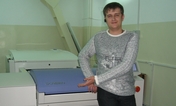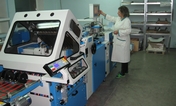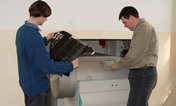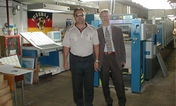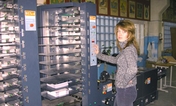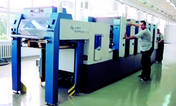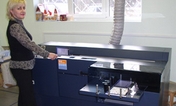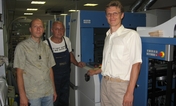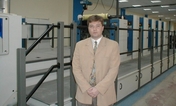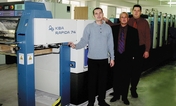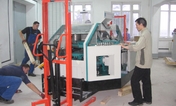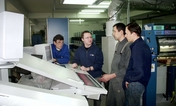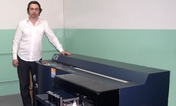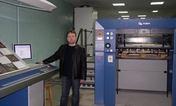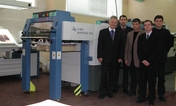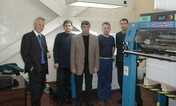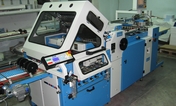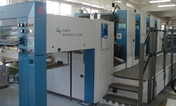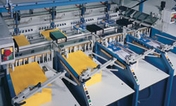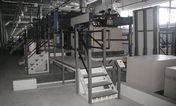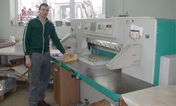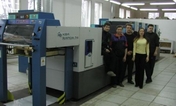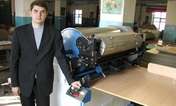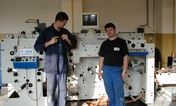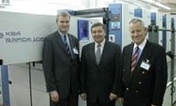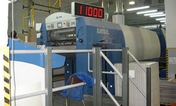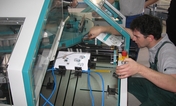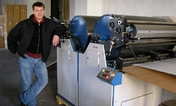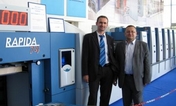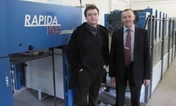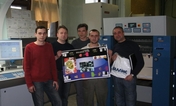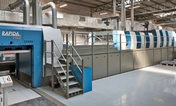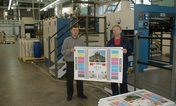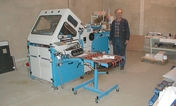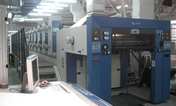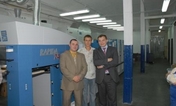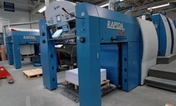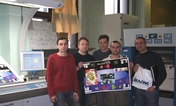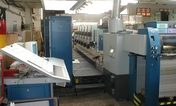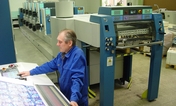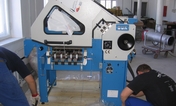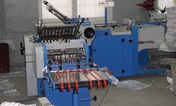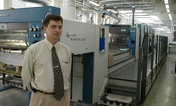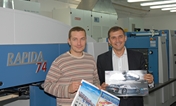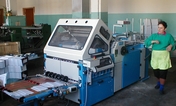Following preliminary disclosures in early March, press manufacturer Koenig & Bauer AG (KBA) has now published its financial statements for 2012. The group posted a significant increase in operating profit. KBA’s traditional business is in sheetfed and web offset presses but is also successfully active in growing markets, such as packaging, security, digital printing and coding. Earnings before and after tax were higher than in 2011, despite a considerable one-off special depreciation. The management and supervisory boards will propose a dividend of 40 cents per share at the AGM on 13 June 2013 to allow shareholders to participate in the group’s positive result and the parent’s profit.

World premiere: the KBA Rapida 106 with 19 printing and finishing units at Amcor Tobacco Packaging in Rickenbach/Switzerland sets a new record in medium-format sheetfed packaging printing worldwide
Drupa boosts sheetfed offset business
Group sales climbed by 10.9% to EUR 1,293.9m, compared to the prior-year figure of EUR 1,167.2m. Sheetfed offset sales rose by 10.2% to EUR 643.2m triggered by the industry’s leading trade show, Drupa. Despite newspaper, illustration and magazine printers reluctance to invest, in the web and special press division sales increased by 11.5% to EUR 650.7m driven by strong business in special presses. However, the intake of new orders came to EUR 1,116.2m, 28.1% lower than 2011. While the sheetfed division saw a 17.1% increase, orders for web and special presses were only half as high as in the record previous year. At the end of 2012 order backlog came to EUR 648m, still more than in the years 2008 to 2010.
Jump in operating profit
Cost-cutting measures and higher contribution margins from a rise in sales and the growth in service and special press turnover resulted in an operating profit before special items of EUR 43.1m. Despite enormous ongoing pricing pressure affecting the web and sheetfed offset business, this figure is more than four times that of 2011 (EUR 9.9m). KBA’s sheetfed division was affected by a one-off special depreciation on fixed assets of EUR 27.1m. Following this value adjustment, group operating profit stood at EUR 16m. Benefiting from an advantageous product mix, the web and special press division posted a jump in earnings to EUR 54.7m, almost twice the figure for 2011 (EUR 28m). However, the one-time impairment as well as high trade show and launch costs for new press generations dampened operational earnings in the sheetfed sector. Following a EUR 18.1m loss the previous year, earnings in this division fell to –EUR 38.7m. Excluding the impairment this segment’s result stood at –EUR 11.6m.
Group pre-tax profit (EBT) climbed from EUR 3.3m in 2011 to EUR 6.1m. KBA posted a net group profit (after tax) of EUR 2.3m and earnings per share of 14 cents.
Solid finances opens up strategic options
Although the execution of major projects and the decline in new orders for web presses resulted in a fall in customer prepayments, cash flow from operating activities remained high at EUR 83.3m (2011: EUR 83.9m). Free cash flow grew from EUR 57.8m to EUR 61.2m causing liquid assets to swell to EUR 206.3m. After scaling back bank loans to EUR 31.6m, KBA’s strong net financial position of +EUR 174.7m plus credit lines approved for the next three years strengthen the group’s solid financial standing. This is also reflected in the group’s equity ratio of 40.2% and an above-average equity-to-fixed-assets ratio. The world’s second-largest press manufacturer’s financial and balance sheet ratios positively outperform other companies in the industry. Thus giving KBA the room for strategic options in a fast changing market environment under pressure from online media and regional power shifts in the global economy. KBA continues to live up to its reputation as an engine of innovation with approx. 4.5% of sales going to R&D projects in 2012.
Export level nudges 90%
In 2012 KBA’s export ratio stood at 88.2% due to lower domestic sales. The proportion of deliveries going to the rest of Europe came to only 30.6% (2011: 35.6%) driven by the economic downturn in key markets. Compared to the previous year, the proportion of the group total attributable to North America rose slightly from 8.6% to 10.4% given a moderate recovery of business in this region. The growth region Asia/Pacific, pushed by China, contributed to 24.1% of group sales. In the threshold markets of Latin America and Africa sales soared to 23.1% (2011: 12.8%), well over the historical average.
Payroll approaches 6,000
At the end of December the group workforce totalled 6,187, including 428 apprentices. Excluding the staff at the group’s newly consolidated Swiss subsidiary, Print Assist AG, the number of employees was down by 237, compared to 2011. Phased retirement schemes and other initiatives in place since 2009 to stabilise capacity will reduce the total to below 6,000 in the next few years. At KBA qualifying future generations remains a priority which is reflected in its above-average training rate of 6.9%.

Investment in print: the Times Union newspaper in Albany, New York, part of the US media group Hearst Corporation bucks the trend in the North American newspaper industry. Shown here during the official inauguration of the group’s new KBA Commander CL web press on 19 March are publisher George R. Hearst III and director of operations Dan Couto (r)
Cautious outlook for 2013
In the outlook for 2013, KBA management refers to the unstable market environment, ongoing consolidation in the printing press industry and further risks, such as exchange rate developments, which make longer-term forecasts difficult. The KBA board will therefore clarify its views further in the interim reports to come.
KBA expects a boost in sheetfed offset sales triggered by the world’s second-largest trade show, China Print, in May. A further moderate increase in earnings and sales similar to 2012 are the group’s targets for 2013 based on the current order and project situation. The group envisages a slight decline in sales for web offset presses and security printing systems, which will have to be counteracted with cost-cutting measures in the web division. In the sheetfed segment the strategy of not concentrating purely on sales volume is accompanied by cost savings especially in manufacturing.
KBA president and CEO Claus Bolza-Schunemann said: “Our ongoing programme to sustainably improve the profitability of the sheetfed and web offset business should achieve savings in the double-digit million euro range by the end of 2014. Along with the introduction of a product-house organisation and amendments to wage agreements, we started further initiatives to cut general and administrative expenses in core areas, in group-wide purchasing and at the group’s manufacturing facilities. In addition, in the past year we pressed ahead with the realignment of production capacity in place since 2009”.
Further diversification in growth markets
Beside the additional optimisation of the group’s internal processes, diversifying in growth markets remains a focus following the entry into the new business field of digital printing. KBA CEO: “The diverse packaging market is particularly of interest to us, which led us to announce the planned takeover of the Italian press manufacturer, Flexotecnica, at the end of February. This company produces presses for the growing market of flexible packaging, such as film. Our focus on improving internal processes and the extension of our product range will cause additional expenses which we invest in the future of the company”.
- Figures at a glance
- The financial statements can be downloaded as a PDF file from here...

